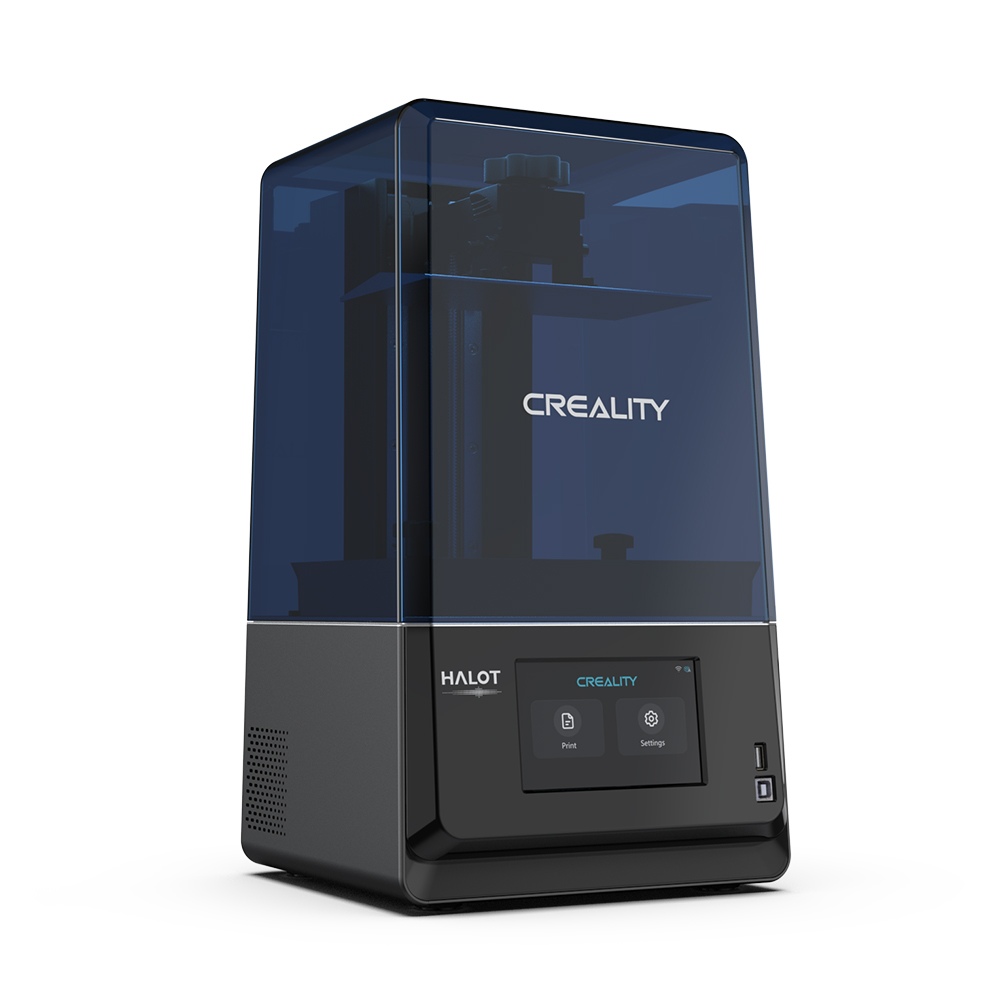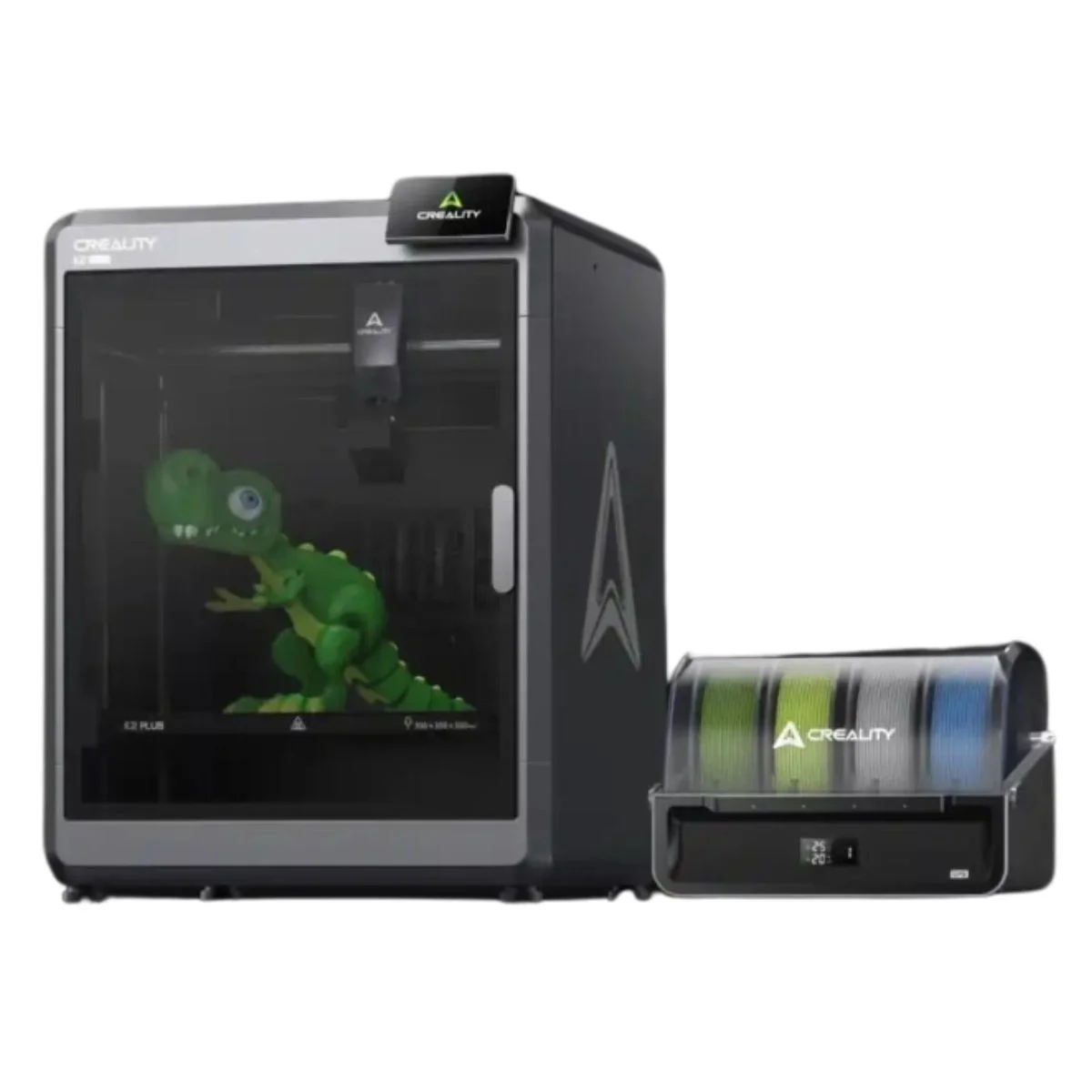Compare Halot One Plus vs K2 Plus
Comparison between the best 3D printers
Choose the best 3D printer at the best price. The cheapest 3D printers are here.
Buy a 3D printer here with 3D Fila.
 |
 |
|
| Model | Halot One Plus[BUY Halot One Plus] |
K2 Plus[BUY K2 Plus] |
| Printing Material | Resin | Filament |
| Buy Resin for Creality 3D Halot One Plus | Buy Filament forCreality K2 Plus | |
| Estimated price | $399,00 | $1500,00 |
| Manufacturer | Creality 3D | Creality |
| Release Year | 2022 | 2024 |
| Print Volume [mm] | 102x172x160 | 350x350x350 |
| Printer Size [mm] | 236x245x416 | 495x515x640 |
| Weight [kg] | 6,8 | 33,5 |
| Power Loss Recovery | NO | YES |
| Maximum Resolution [mm] | 0,1 | |
| Processor | ||
| Display | Touchscreen 4,3'' | |
| Power Supply | 1200 W | |
| Connectivity | USB / Wi-Fi | USB / WIfi |
| Operating systems | Windows, Linux, Macbook | |
| Date of registration in the system | 2022-10-11 | 2024-06-26 |
| Release date | 2022 | 2024 |
| Extra features | Crealitys Halot-One Plus printer stands out for its 4K+ resolution that delivers sharp details and consistent surfaces. It features a fast and responsive 5-inch LCD interface, as well as easy-to-use Halot Box software. It offers Wi-Fi connectivity and remote print monitoring, as well as an integrated air filtration unit, a rare feature in this price range. The Halot-One Plus is designed for the prosumer market, combining high quality with advanced features such as Wi-Fi and air filtration. During testing, it stood out for implementing these features at an affordable cost, while maintaining functionality. It features an attractive design with a UV-resistant blue cover and a robust dual rail system for the Z-axis, ensuring smooth and consistent movements. The large LCD and high resolution of the LCD mask (4320 x 2560) are other strong points, allowing for fine details and textures in prints. | The Creality K2 Plus 3D Printer stands out for its multicolor printing, large build volume (350x350x350 mm) and Apus Direct Drive extruder with tri-metal protection nozzle. It features automatic anti-tilt leveling, FOC closed-loop motors and active chamber heating. In addition, it has an intelligent CFS filament management system, cameras for calibration and monitoring, a 4.3-inch touchscreen and advanced sensors to optimize the printing process. |
| Support for multiple colors and materials (AMS and CFS) | NO | YES |
Notes * |
||
| Cost-benefit | 8 / 10 | 7 / 10 |
| Hardware | 1.2 / 10 | 6.4 / 10 |
| Tela | . | . |
| Print volume | 3 / 10 | 4 / 10 |
| Performance | 9 / 10 | 5 / 10 |
| [BUY Halot One Plus] | [BUY K2 Plus] |
Conclusion |
| In comparing the Creality Halot One Plus and the Creality K2 Plus 3D printers, several key factors emerge that can help potential buyers make an informed decision based on their needs and budget. The Halot One Plus, priced more affordably, offers an impressive 4K+ resolution, making it a strong contender for users seeking high detail in smaller print volumes (102x172x160 mm). Its lightweight design, advanced features like Wi-Fi connectivity, and integrated air filtration make it appealing for prosumers aiming for quality without breaking the bank. The practical size and user-friendly Halot Box software further enhance its value for those new to 3D printing or looking for ease of use. On the other hand, the K2 Plus caters to a different segment with its larger build volume (350x350x350 mm) and the ability to handle multicolor printing, catering to more complex projects. The advanced technologies, such as anti-tilt leveling and active chamber heating, facilitate high performance, making it suitable for professionals who require precision and versatility in their printing tasks. However, its higher price reflects these enhancements, positioning it as a more significant investment. Ultimately, the choice boils down to the intended use and budget. The Halot One Plus is ideal for hobbyists or newcomers who prioritize detail and ease of use, while the K2 Plus serves better for advanced users who need larger print capabilities and sophisticated features at a premium price. Both printers score equally well in terms of cost-benefit and performance, but their varied features and specifications cater to distinct user preferences and requirements in the realm of 3D printing. |

